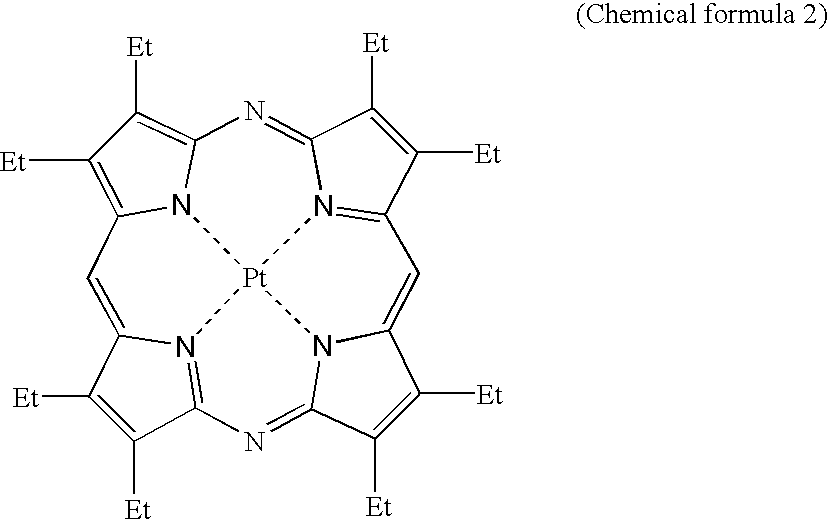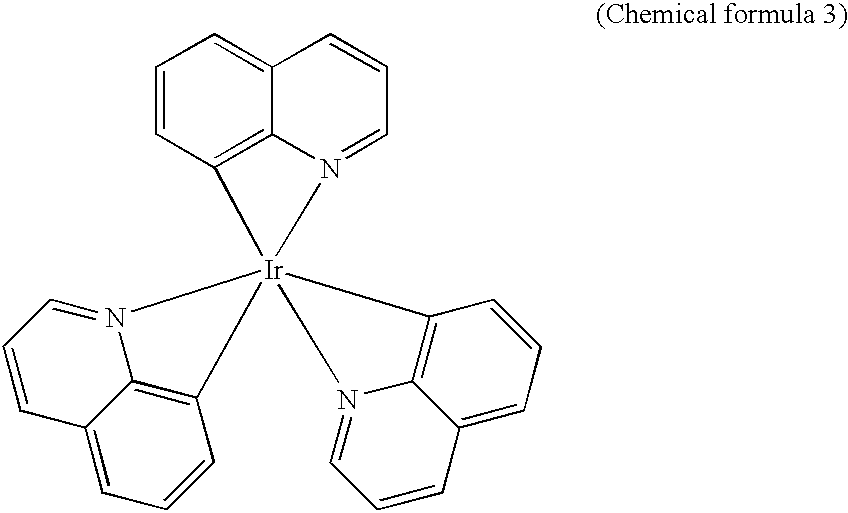Self light emitting device and method of driving thereof
a self-emitting, light-emitting technology, applied in static indicating devices, electric lighting sources, instruments, etc., can solve the problems of insufficient brightness and irregularities, weak dispersion of electric current characteristics of el drivers, and difficulty in circuit structur
- Summary
- Abstract
- Description
- Claims
- Application Information
AI Technical Summary
Benefits of technology
Problems solved by technology
Method used
Image
Examples
embodiment 1
[0113] A method of achieving a brightness equal to that of a normal EL element by adding a certain corrective value to an input digital image signal and effectively converting it to a signal of several gray scales higher, can be given as one method of correcting insufficient brightness in degraded EL elements by using the image signal level. The easiest method to realize this by circuit design, a circuit capable of processing the superimposition gray scales is prepared beforehand. Specifically, for a case of a six bit digital gray scale (64 gray scales) self light emitting device of the present invention having a brightness correction function, for example, a one bit of processing capability is added as superimposition means for performing correction. This is effectively designed as seven bit digital gray scales (128 gray scales), manufactured, and in normal operation, the lower six bits are used. If an EL element develops degradation, the corrective value is added to the normal dig...
embodiment 2
[0114] A method of correcting a digital image signal, differing from the method of embodiment 1, is explained in embodiment 2.
[0115] Refer to FIG. 1 and FIGS. 2A to 2E. FIG. 2A shows a portion of a pixel of the display device 108 in FIG. 1. Note that, for simplicity, photoelectric conversion elements arranged in a pixel portion are not shown in the figures.
[0116] Three pixels, pixels 201 to 203, are considered here. First, the pixel 201 is a pixel which does not develop degradation, while both the pixels 202 and 203 develop a certain amount of degradation. If the amount of degradation in the pixel 203 is taken as being larger than that of the pixel 202, then the brightness reduction also naturally becomes larger along with the degradation. In other words, if a certain intermediate gray scale is displayed, then brightness irregularities develop as in FIG. 2B. The brightness of the pixel 202 becomes lower than the brightness of the pixel 201, and further, the brightness of the pixel 2...
embodiment 3
[0128] Details of the display device 108 in the schematic diagram shown in FIG. 1 are explained using FIGS. 4A and 4B. FIG. 4A is a schematic diagram of the entire display device, and FIG. 4B is an equivalent circuit diagram of a pixel portion. A pixel portion 405 is arranged in the center of a substrate 400 in FIG. 4A. Pixels 406, each having an EL element and a photoelectric conversion element, are arranged in a matrix shape in the pixel portion 405, as explained later. An EL source signal line driver circuit 401, an EL gate signal line driver circuit 402, a photoelectric conversion element signal line driver circuit 403, and a photoelectric conversion element scanning line driver circuit 404 are arranged in the periphery of the pixel portion 405. One each of the driver circuits are arranged in the periphery of the pixel portion in embodiment 3, but different circuit arrangements may also be used, such as the EL source signal line driver circuit 401 and the photoelectric conversio...
PUM
 Login to View More
Login to View More Abstract
Description
Claims
Application Information
 Login to View More
Login to View More - R&D
- Intellectual Property
- Life Sciences
- Materials
- Tech Scout
- Unparalleled Data Quality
- Higher Quality Content
- 60% Fewer Hallucinations
Browse by: Latest US Patents, China's latest patents, Technical Efficacy Thesaurus, Application Domain, Technology Topic, Popular Technical Reports.
© 2025 PatSnap. All rights reserved.Legal|Privacy policy|Modern Slavery Act Transparency Statement|Sitemap|About US| Contact US: help@patsnap.com



